Structures, Photophysical Properties, and Growth Patterns of Methylurea Coordinated Ni(II) and Mn(II) Complexes
Abstract
:1. Introduction
2. Results and Discussion
2.1. Structures of (II), (III), and (IV)
2.2. Dislocation Etch Pit and Growth Steps
2.3. TGA and DTA Analysis
2.4. Photophysical Properties
3. Experimental
Synthesis and Crystallization
4. Conclusions
Supplementary Materials
Author Contributions
Conflicts of Interest
References
- Ovcharenko, V.; Kuznetsova, O.; Fursova, E.; Romаnenko, G.; Bogomyakov, V.A. New method for the synthesis of heterospin complexes. Crystals 2015, 5, 634–649. [Google Scholar] [CrossRef]
- Mautner, F.A.; Fischer, R.C.; Spell, M.; Acevedo, A.R.; Tran, D.H.; Massoud, S.S. Metal(II) complexes of compartmental polynuclear schiff bases containing phenolate and alkoxy groups. Crystals 2016, 6, 91. [Google Scholar] [CrossRef]
- Young, K.H. Research in nickel/metal hydride batteries 2016. Batteries 2016, 2, 31. [Google Scholar] [CrossRef]
- Mathpal, S.; Kandpal, N.D. Colorimetric estimation of Ni(II) Ions in aqueous solution. J. Chem. 2009, 6, 445–448. [Google Scholar] [CrossRef]
- Beevers, C.A.; Lipson, H. The Crystal Structure of Nickel Sulphate Hexahydrate, NiSO4∙6H2O. Z. Krist. 1935, 91, 157–169. [Google Scholar] [CrossRef]
- Duraikkan, V.; Bahadur, S.A.; Athimoolam, S. Crystal Growth and Characterization of Potassium Manganese Nickel Sulphate Hexahydrate—A New UV Filter. J. Min. Mater. Charact. Eng. 2012, 11, 1121–1125. [Google Scholar] [CrossRef]
- Koga, N.; Tanaka, H. Thermoanalytical and microscopic investigations of the thermal dehydration of α-nickel(II) sulphate hexahydrate. J. Therm. Anal. 1993, 40, 1165–1172. [Google Scholar] [CrossRef]
- Singh, N.B.; Partlow, W.D. Crystals for Ultraviolet Light Filters. U.S. Patent 5788765, 4 August 1998. [Google Scholar]
- Rudneva, E.B.; Mamomenova, V.L.; Malakhova, L.F.; Voloshin, A.E.; Smirnova, T.N. Cs2Ni(SO4)2·6H2O (CNSH) crystal: Growth and some properties. Cryst. Rep. 2006, 51, 344–347. [Google Scholar] [CrossRef]
- Su, G.B.; Zhuang, X.X.; He, Y.P.; Li, Z.D.; Wang, G.F.; Li, G.H.; Huang, Z.X. A new single crystal of iron nickel sulfate twelve hydrate (FNSH) used as optical band pass filters. J. Cryst. Growth 2002, 243, 238–242. [Google Scholar] [CrossRef]
- Wang, X.; Zhuang, X.X.; Su, G.B.; He, Y.P. A new ultraviolet filter: Rb2Ni(SO4)2·6H2O (RNSH) single crystal. Opt. Mater. 2008, 31, 233–236. [Google Scholar] [CrossRef]
- Su, G.B.; Zhuang, X.X.; He, Y.P.; Zheng, G.Z. A new crystal of ammonium cobalt nickel sulfate hexahydrate for UV light band-pass filter. Opt. Mater. 2008, 30, 916–919. [Google Scholar] [CrossRef]
- Zhuang, X.X.; Su, G.B.; He, Y.P.; Zheng, G.Z. Growth and characterization of potassium cobalt nickel sulfate hexahydrate for UV light filters. Cryst. Res. Technol. 2006, 41, 1031–1035. [Google Scholar] [CrossRef]
- Vanitha, D.; Kumar, S.S.; Athimoolam, S.; Bahadur, S.A. Growth and characterization of K2ZnxNi1-x(SO4)2·6H2O mixed crystals for UV filters. Optik 2015, 126, 4553–4556. [Google Scholar] [CrossRef]
- Silambarasan, A.; Rajesh, P.; Ramasamy, P. Study on structural, morphological, optical and thermal propertiesof guanidine carbonate doped nickel sulfate hexahydrate crystal. Spectrochim. Acta Part A 2015, 134, 345–349. [Google Scholar] [CrossRef] [PubMed]
- Meena, K.; Bhagavannarayana, G.; Mojumdar, S.C. Urea/thiourea induced crystal growth of ammonium nickel sulfate hexahydrate and characterization studies. J. Therm. Anal. Calorim. 2015, 119, 963–968. [Google Scholar] [CrossRef]
- Gao, S.M.; Xu, Z.H.; Ye, L.W.; Su, G.B.; Zhuang, X.X. Synthesis, crystal structure and properties of a coordination compound: Ni(C6H12N4)2SO4·4H2O. Chin. J. Struct. Chem. 2015, 34, 1682–1688. [Google Scholar]
- Nardelli, M.; Coghi, L. Bivalent metal sulfates hexacoördinated with methylurea. Gazz. Chim. Ital. 1958, 88, 355–358. [Google Scholar]
- Nardelli, M.; Coghi, L. Complexes of bivalent metals with organic molecules containing oxygen (formamide, acetamide, methylurea). Ric. Sci. 1959, 29, 134–138. [Google Scholar]
- Dolomanov, O.V.; Bourhis, L.J.; Gildea, R.J.; Howard, J.A.K.; Puschmann, H. OLEX2: A complete structure solution, refinement and analysis program. J. Appl. Cryst. 2009, 42, 339–341. [Google Scholar] [CrossRef]
- Sheldrick, G.M. Crystal structure refinement with SHELXL. Acta Cryst. 2015, C71, 3–8. [Google Scholar]
- Burton, W.K.; Cabrera, N.; Frank, F.C. The growth of crystals and the equilibrium structure of their surfaces. Philos. Trans. R. Soc. Lond. A 1951, 243, 299–358. [Google Scholar] [CrossRef]
- Kossel, W. Über Krystall wachstum. Sci. Nat. 1930, 18, 901–910. [Google Scholar] [CrossRef]
- Chernov, A.A. Formation of crystals in solutions. Contemp. Phys. 1989, 30, 251–276. [Google Scholar] [CrossRef]
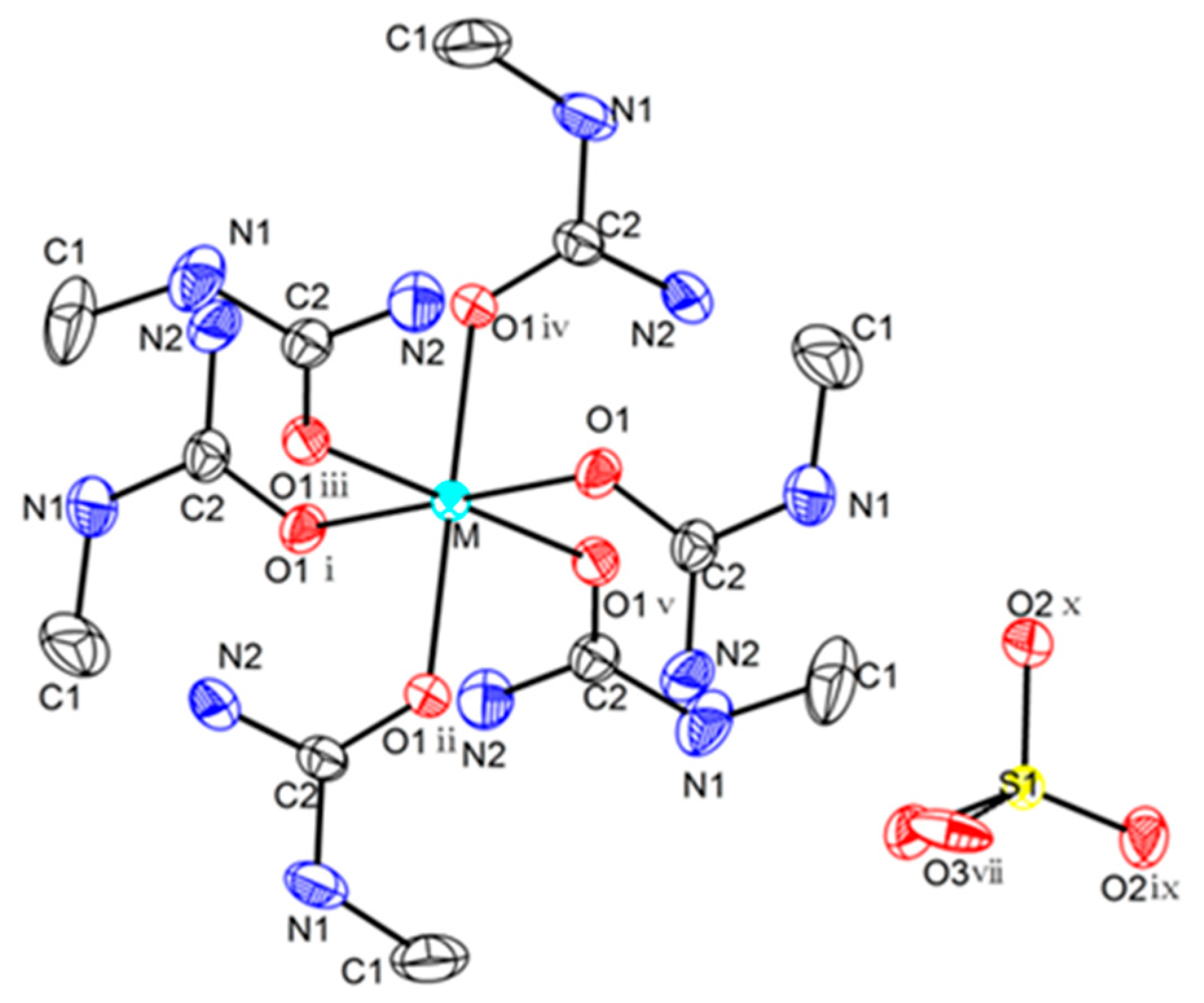
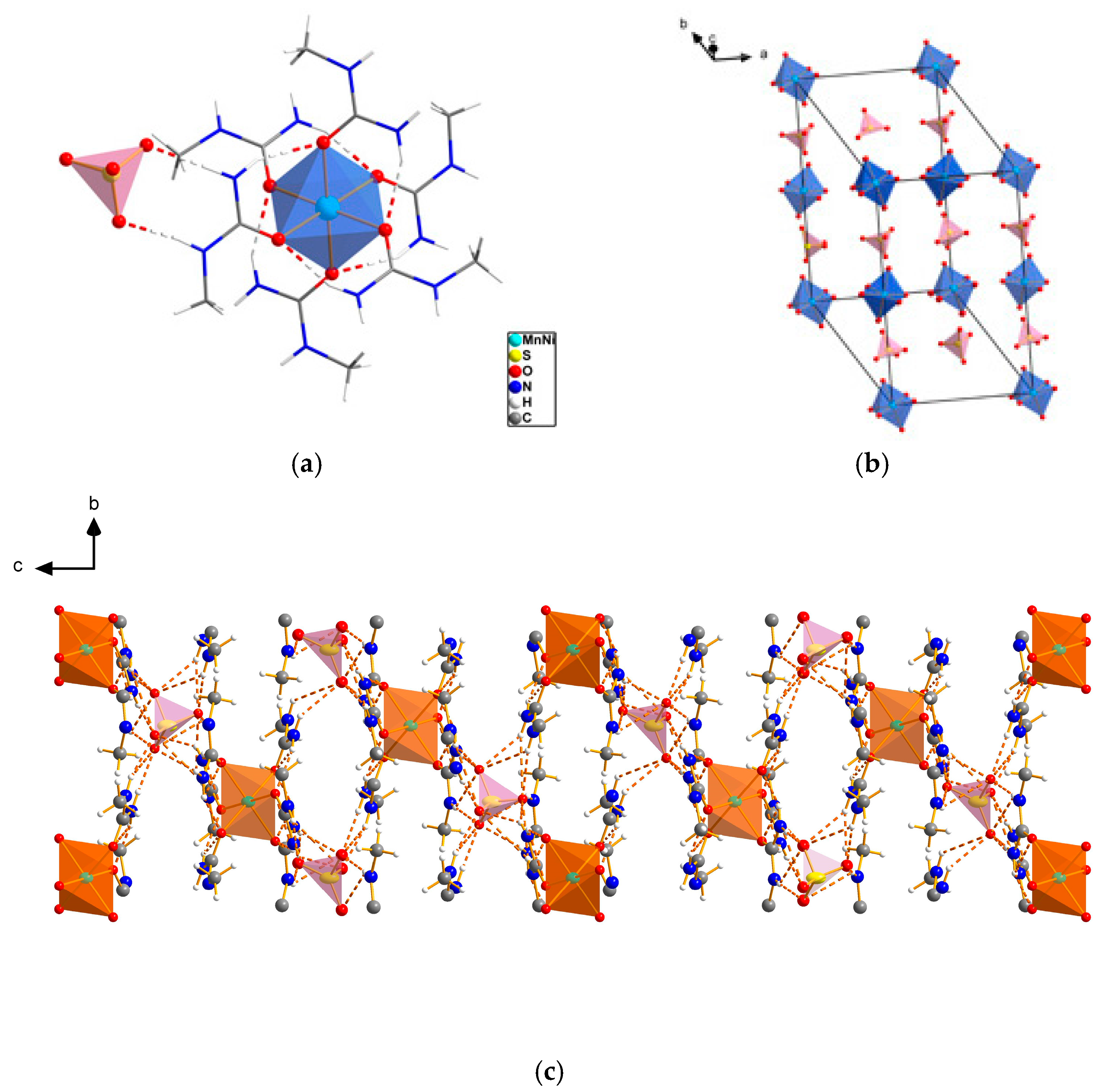
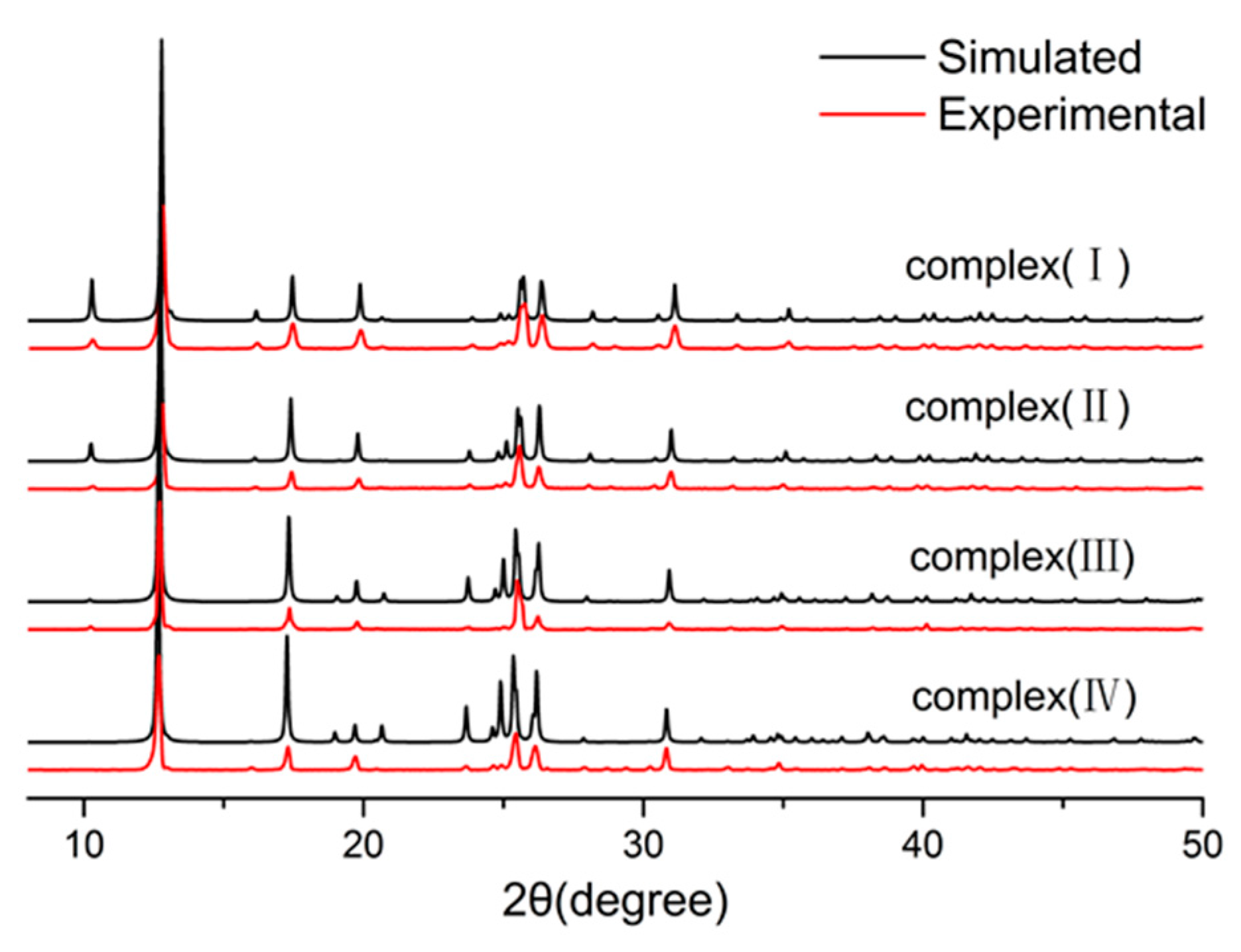

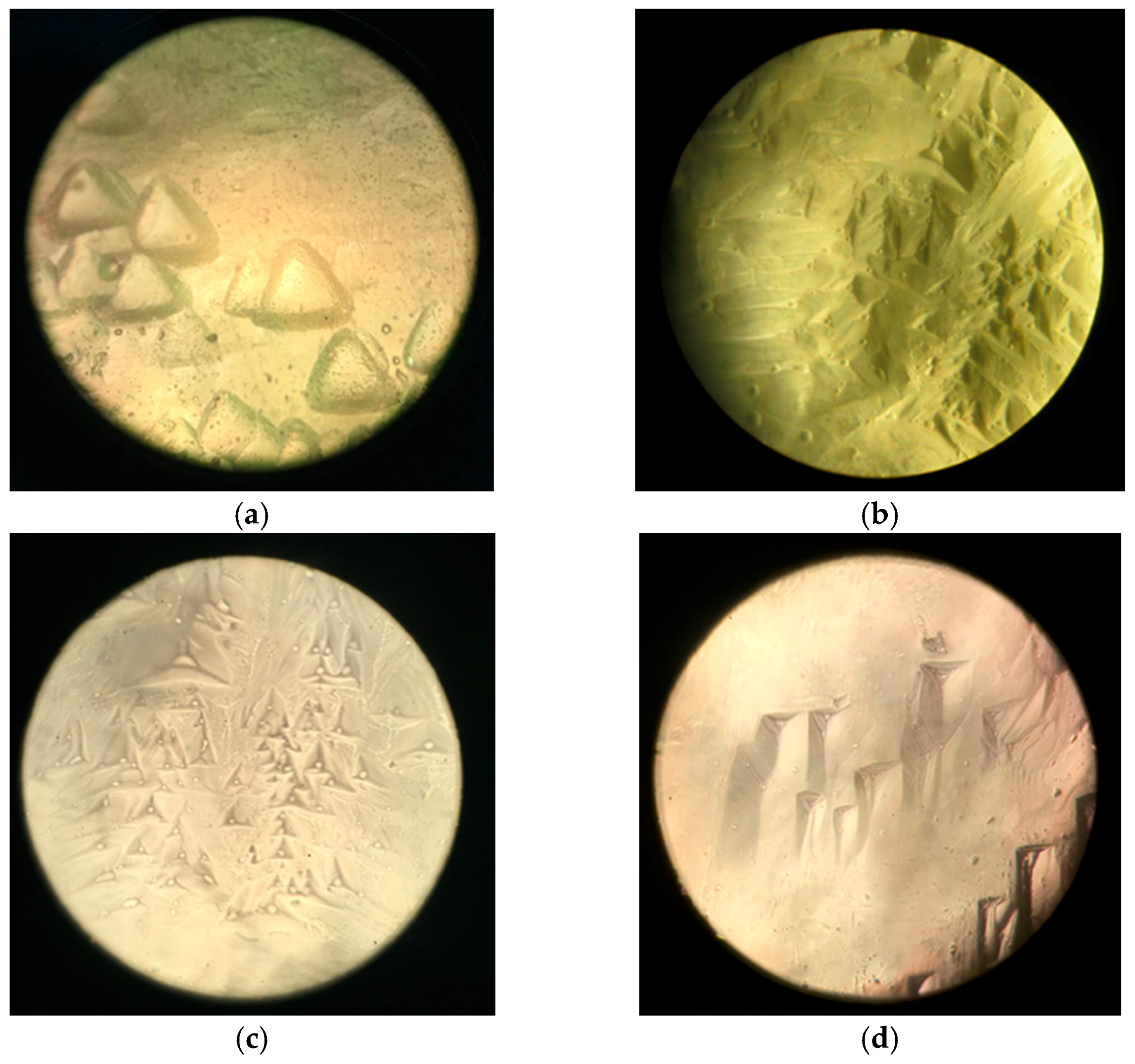
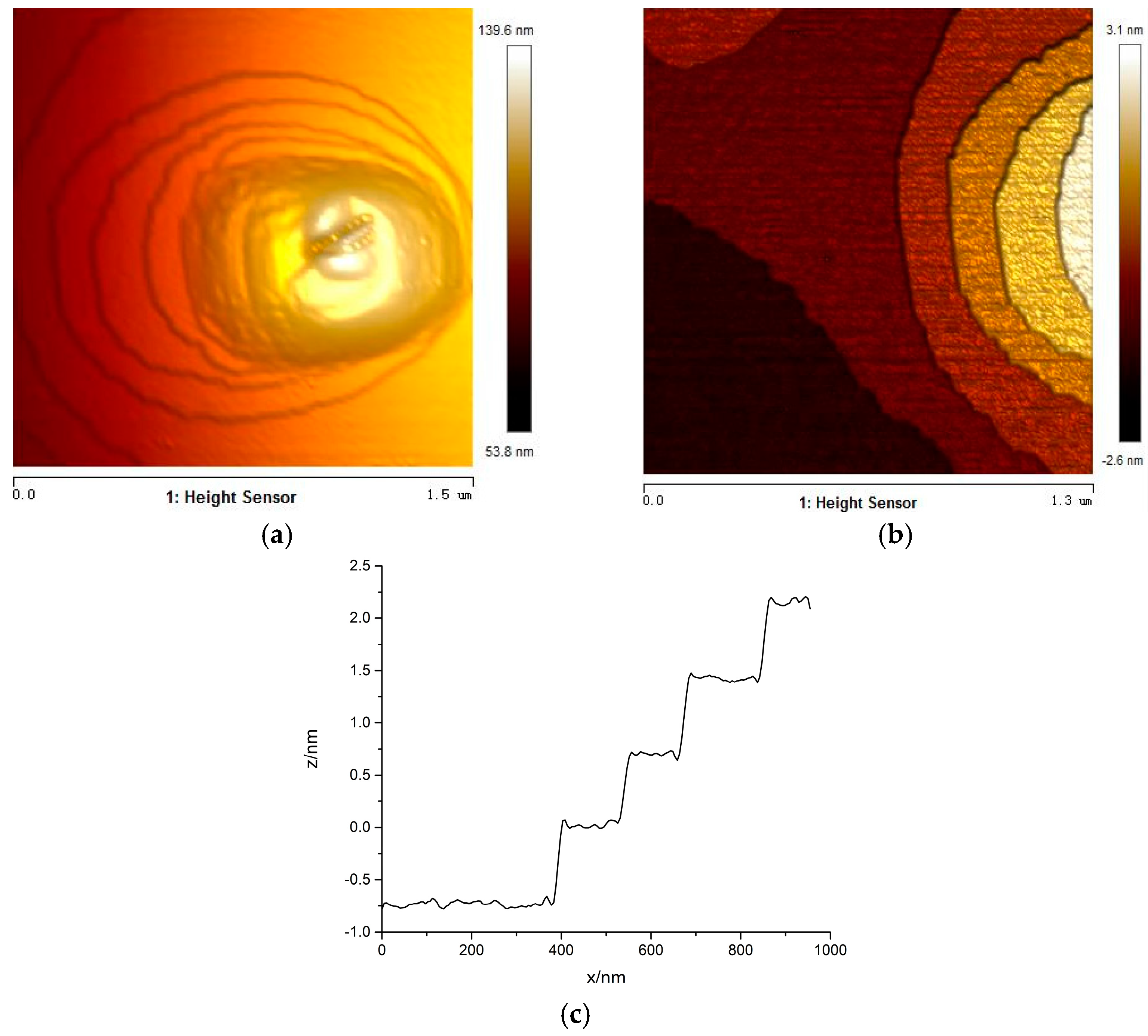
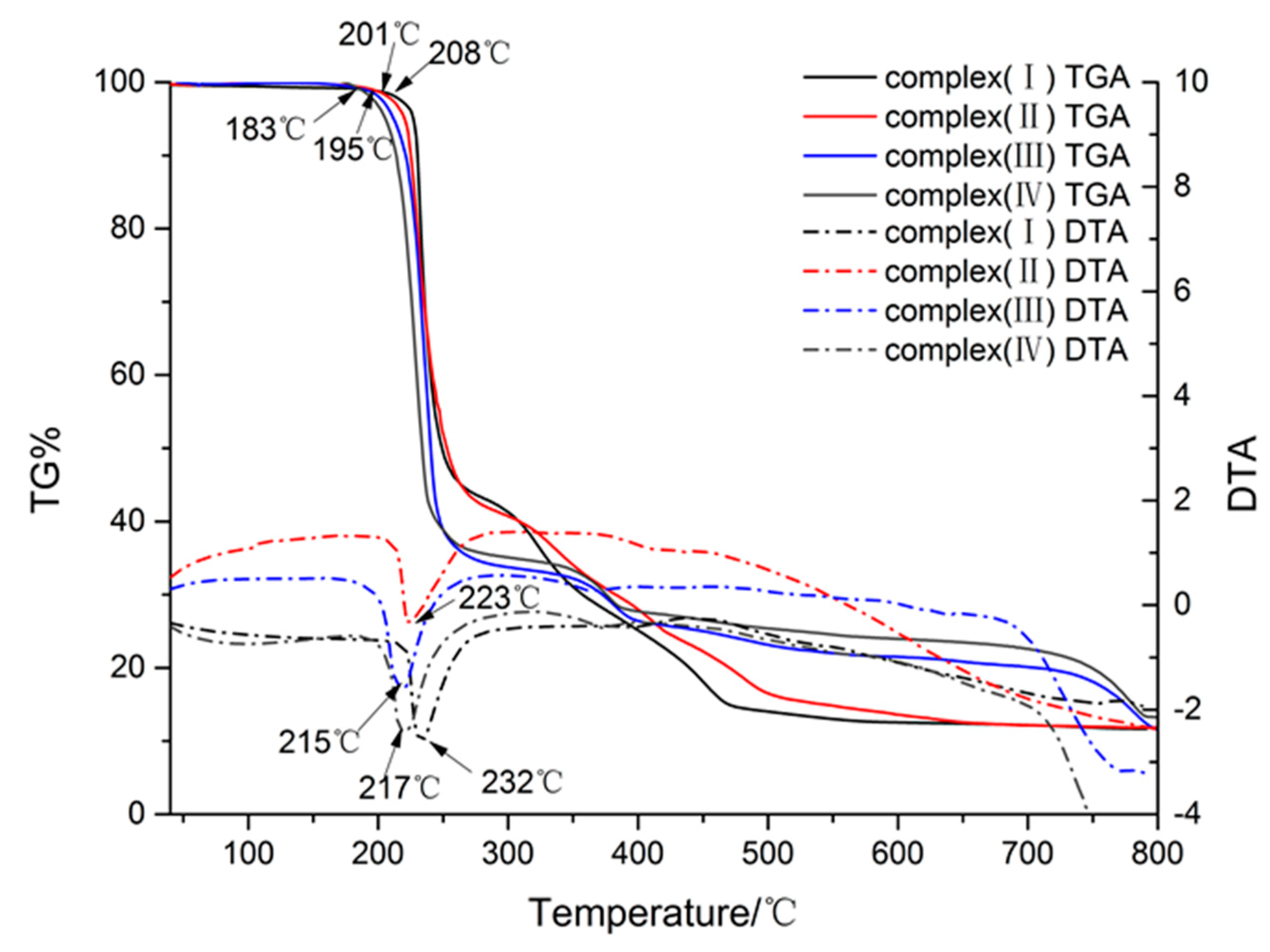
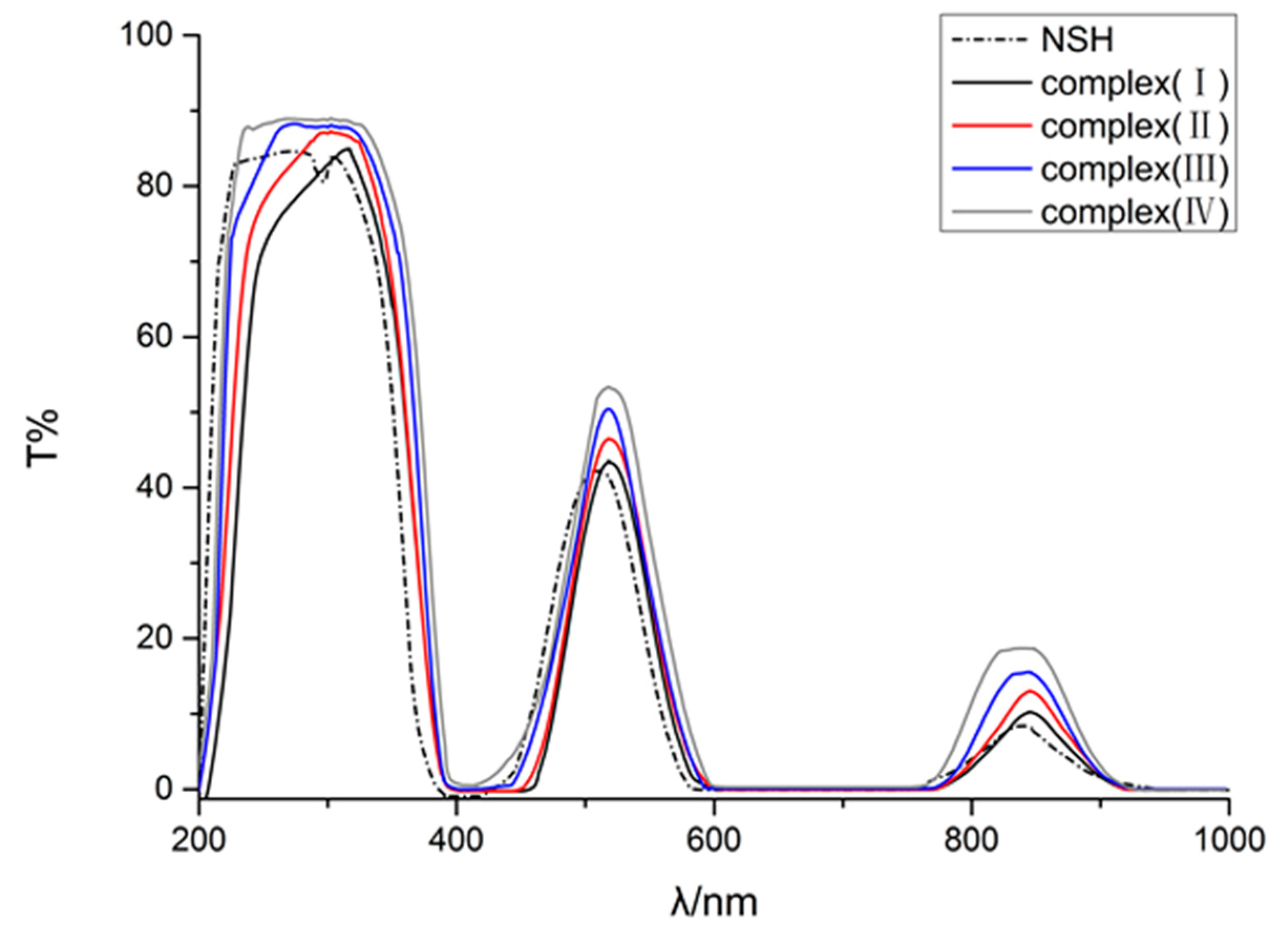

| Crystal Data | (II) | (III) | (IV) |
|---|---|---|---|
| CCDC No. | 1511167 | 1511166 | 1515437 |
| Chemical formula | C12H36Mn0.33N12Ni0.67O6·O4S | C12H36Mn0.75N12Ni0.25O6·O4S | C12H36Mn0.90N12Ni0.10O6·O4S |
| Mr | 598.04 | 596.47 | 595.53 |
| Crystal system, space group | Trigonal, R-3c | Trigonal, R-3c | Trigonal, R-3c |
| Temperature (K) | 293 | 293 | 293 |
| a, c (Å) | 10.9919 (7), 40.634 (5) | 11.0402 (5), 40.696 (4) | 11.0845(6), 40.805(4) |
| V (Å3) | 4251.7 (7) | 4295.7 (6) | 4341.8(7) |
| Z | 6 | 6 | 6 |
| Radiation type | Mo Kα | Mo Kα | Mo Kα |
| μ (mm−1) | 0.75 | 0.65 | 0.61 |
| Crystal size (mm) | 0.18 × 0.16 × 0.12 | 0.20 × 0.20 × 0.20 | 0.18 × 0.16 × 0.14 |
| Diffractometer | Bruker P4 diffractometer | Bruker P4 diffractometer | Bruker P4 diffractometer |
| Absorption correction | Multi-scan Crystal Clear | Multi-scan Crystal Clear | Multi-scan Crystal Clear |
| Tmin, Tmax | 0.740, 1.000 | 0.752, 1.000 | 0.840, 1.000 |
| No. of measured, independent and observed[I > 2σ(I)] reflections | 8948, 964, 875 | 9215, 1090, 932 | 9929, 1090, 946 |
| Rint | 0.037 | 0.039 | 0.046 |
| (sin θ/λ)max (Å−1) | 0.624 | 0.649 | 0.648 |
| R[F2 > 2σ(F2)], wR(F2), S | 0.042, 0.118, 1.10 | 0.043, 0.120, 1.07 | 0.048, 0.139, 1.08 |
| Data/restraints/parameters | 964/9/63 | 1090/0/63 | 1090/0/63 |
| H-atom treatment | H-atom parameters constrained | H-atom parameters constrained | H-atom parameters constrained |
| Δρmax, Δρmin (e·Å−3) | 0.74, −0.53 | 0.58, −0.47 | 0.63, −0.42 |
| Bond Lengths and Bond Angles | (II) | (III) | (IV) |
|---|---|---|---|
| M–O1 | 2.0921(14) | 2.1366(13) | 2.1706(14) |
| M–O1 i | 2.0923(14) | 2.1366(13) | 2.1708(14) |
| M–O1 ii | 2.0923(15) | 2.1365(13) | 2.1708(14) |
| M–O1 iii | 2.0923(14) | 2.1366(13) | 2.1708(14) |
| M–O1 iv | 2.0921(14) | 2.1366(13) | 2.1706(14) |
| M–O1 v | 2.0921(14) | 2.1365(13) | 2.1706(14) |
| O1–C1 | 1.256(3) | 1.255(2) | 1.258(2) |
| N1–C1 | 1.332(3) | 1.329(3) | 1.332(3) |
| N1–C2 | 1.441(4) | 1.432(4) | 1.439(4) |
| N2–C1 | 1.328(3) | 1.335(3) | 1.333(3) |
| O1 ii–M–O1 v | 180.0 | 180.0 | 180.0 |
| O1 i–M–O1 | 179.99(9) | 180.0 | 180.0 |
| O1 iv–M–O1 iii | 179.990(1) | 180.00(7) | 180.0 |
| D–H···A | D–H | H···A | D···A | D–H···A |
|---|---|---|---|---|
| N1–H1···O2 vii | 0.86 | 2.00 | 2.839 (4) | 163 |
| N1–H1···O3 | 0.86 | 2.62 | 3.441 (3) | 160 |
| N2–H2A···O1 v | 0.86 | 2.11 | 2.881 (3) | 150 |
| N2–H2B···O2 viii | 0.86 | 2.31 | 3.040 (6) | 144 |
| N2–H2B···O2 ix | 0.86 | 1.98 | 2.837 (4) | 179 |
| D–H···A | D–H | H···A | D···A | D–H···A |
|---|---|---|---|---|
| N1–H1···O2 x | 0.86 | 1.99 | 2.831(4) | 164 |
| N1–H1···O3 | 0.86 | 2.63 | 3.450(3) | 159 |
| N2–H2A···O1 iv | 0.86 | 2.14 | 2.916(2) | 151 |
| N2–H2B···O2 | 0.86 | 2.31 | 3.045(5) | 143 |
| N2–H2B···O2 ix | 0.86 | 1.98 | 2.835(4) | 179 |
| D–H···A | D–H | H···A | D···A | D–H···A |
|---|---|---|---|---|
| N1–H1···O2 | 0.86 | 2.00 | 2.832(4) | 164 |
| N1–H1···O3 vii | 0.86 | 2.64 | 3.457(3) | 160 |
| N2–H2A···O1 iv | 0.86 | 2.16 | 2.944(3) | 151 |
| N2–H2B···O2 x | 0.86 | 2.31 | 3.039(5) | 143 |
| N2–H2B···O2 vi | 0.86 | 1.98 | 2.836(4) | 179 |
© 2017 by the authors. Licensee MDPI, Basel, Switzerland. This article is an open access article distributed under the terms and conditions of the Creative Commons Attribution (CC BY) license ( http://creativecommons.org/licenses/by/4.0/).
Share and Cite
Wang, W.; Xu, Z.; Ye, L.; Su, G.; Zhuang, X. Structures, Photophysical Properties, and Growth Patterns of Methylurea Coordinated Ni(II) and Mn(II) Complexes. Crystals 2017, 7, 68. https://doi.org/10.3390/cryst7030068
Wang W, Xu Z, Ye L, Su G, Zhuang X. Structures, Photophysical Properties, and Growth Patterns of Methylurea Coordinated Ni(II) and Mn(II) Complexes. Crystals. 2017; 7(3):68. https://doi.org/10.3390/cryst7030068
Chicago/Turabian StyleWang, Wenting, Zhihuang Xu, Liwang Ye, Genbo Su, and Xinxin Zhuang. 2017. "Structures, Photophysical Properties, and Growth Patterns of Methylurea Coordinated Ni(II) and Mn(II) Complexes" Crystals 7, no. 3: 68. https://doi.org/10.3390/cryst7030068






